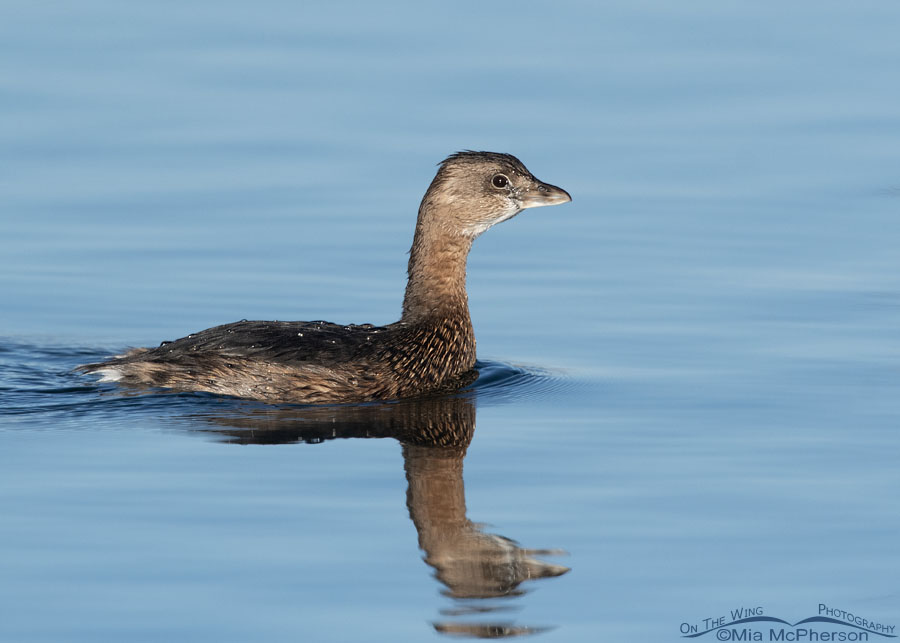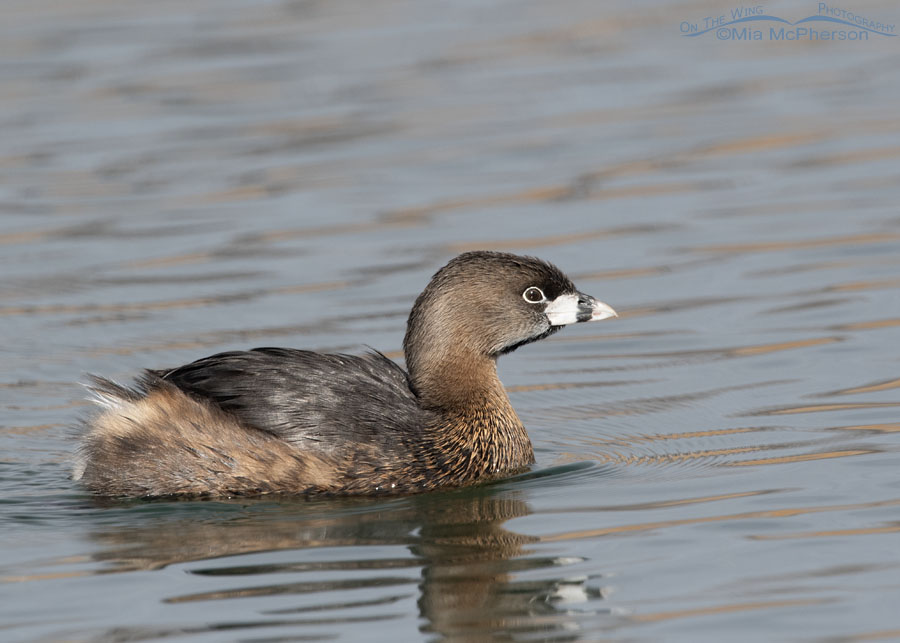Last week, I took a photo of a Pied-billed Grebe in breeding plumage at my local pond. Today, I decided to do a comparison with one in nonbreeding plumage.
 December Pied-billed Grebe in nonbreeding plumage – Nikon D500, tripod mounted, f7.1, 1/3200, ISO 500, Nikkor 500mm VR with 1.4x TC, natural light
December Pied-billed Grebe in nonbreeding plumage – Nikon D500, tripod mounted, f7.1, 1/3200, ISO 500, Nikkor 500mm VR with 1.4x TC, natural light
This image is of a Pied-billed Grebe I photographed at the same pond, but on December 5th of last year. The grebe was in nonbreeding or Definitive Basic Plumage. The bill is a brownish-buff color and has an almost tortoiseshell mottling to it, while the eye-ring is brownish-beige. The chin of this grebe is white to pale buff in color.
 February Pied-billed Grebe in breeding plumage – Nikon D500, tripod mounted, f7.1, 1/2000, ISO 500, Nikkor 500mm VR with 1.4x TC, natural light
February Pied-billed Grebe in breeding plumage – Nikon D500, tripod mounted, f7.1, 1/2000, ISO 500, Nikkor 500mm VR with 1.4x TC, natural light
This grebe that I photographed last week was in breeding or Definitive Alternate Plumage. The bill of this grebe is bluish-white with a black band around it and the eye-ring is also white. The chin feathers are black and the crown of this grebe is noticeably darker than the grebe in nonbreeding plumage.
It also seems to me that the feathers on the neck, chest, and flanks of Pied-billed Grebes in breeding plumage are richer in color and their backs are darker when dry.
Spring is slowly making its appearance known here in the Salt Lake Valley. Even though temperatures have been warmer than normal this winter, I actually look to the birds for those signs of spring.
This has been another winter that wasn’t truly winter down in the valley, but with loads of leaden gray clouds. Which means I’m more than ready for the change of seasons.
I’m looking forward to brighter days, birds in migration, and being on the move myself. I’ve been stationary far too long this winter.
Life is good.
Mia
Click here to see more of my Pied-billed Grebe photos plus facts and information about this species.


Very interesting, great to see the two plumages
Uh..oh. Looks like I double-dipped. Sorry. Credit that to a senior moment.
Wonderful shots and the reflections [always a hook for me] are beautiful. Your narrative is very interesting. Thanks Mia.
Wonderful shots and I love your narrative. Thanks Mia.